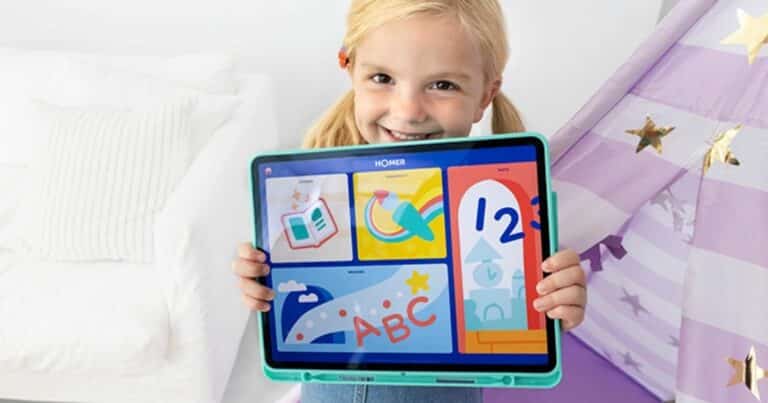
In a world brimming with screens and distractions, cultivating a love for reading in children is a precious gift that will serve them throughout their lives. Hence, a well-curated home library can be the cornerstone of this literary journey, providing a sanctuary where young minds can explore, dream, and learn.
However, single parents lead very busy lives, and regularly taking your child to the library can be difficult with a tight schedule. Fortunately, there’s one solution: a home library.
But how exactly do you make one?
Create an Inviting Reading Space
This space should be a haven where imagination takes flight and the joy of reading blossoms. Consider allocating a cozy corner in your child's room or shared family space, depending on your home's layout and your child's age.
Furnish this area with comfortable seating, soft cushions, and good lighting. A dedicated bookshelf or bookcase is essential for keeping books organised and easily accessible. And don’t forget interactive learning materials, like charts and a world globe.
You can also encourage your child's creativity by adding personal touches like posters, artwork, or even a reading nook with bean bags or a small tent. Creating a visually appealing and comfortable environment will entice your child to spend more time immersed in the world of books.
Choose the Right Books
The heart of any home library lies in its collection of books. Selecting the right books for your children can be a transformative experience. Hence, consider your child's age, interests, and reading level.
For infants and toddlers, board books with vibrant colours and simple textures are excellent choices, while early readers may delight in picture books and beginner chapter books. As your child grows, introduce a diverse range of genres, including fiction, non-fiction, and poetry, to cater to their evolving tastes.
Moreover, don't underestimate the power of representation in literature. Seek books that reflect various cultures, backgrounds, and experiences to foster empathy and understanding.
Remember that your role as a parent or guardian is to guide your child's reading journey, offering suggestions and recommendations while respecting their preferences.
Expand the Collection Over Time
As your child grows and matures, their reading interests will evolve. Therefore, it's essential to regularly update and expand your home library.
If you get the time, make trips to local bookstores or libraries a family outing, allowing your child to choose new books that pique their curiosity.
Also, consider age-appropriate e-books and audiobooks for a versatile reading experience.
Remove Distractions
It's important to create an atmosphere that encourages reading. This means minimising distractions. Consider placing the reading area away from the television and video game consoles.
Keep the space quiet and serene, allowing your child to concentrate. But if noise is difficult to keep out, consider investing in noise-cancelling headphones.
Moreover, electronic devices and screens can easily divert a child's attention from the pages of a book. Hence, it's important to establish guidelines for screen time and designate the reading area as a screen-free zone during reading sessions.
A distraction-free setting allows your child to immerse themselves fully in the world of books and reap the numerous benefits of uninterrupted reading.
Design with Creativity and Exploration in Mind
A well-designed home library is not just about reading; it's also about sparking creativity and exploration. Provide materials for art projects, such as drawing supplies, coloured pencils, and craft paper.
Encourage your child to create book-inspired artwork or even write their own stories. This artistic engagement can deepen their connection to the books they read.
In addition to traditional books, consider adding interactive books to your collection. Pop-up books, touch-and-feel books, and books with hidden flaps can be incredibly engaging for young readers.
These interactive elements add an exciting dimension to the reading experience and can be especially appealing to preschoolers and early readers.
Encouraging Your Kids to Read
Setting up a home library is only the first step. The next one involves ensuring that they use the library you’ve built. This can be easy for kids already engaged in reading. But what about the ones who seem to be disinterested in it?
Here’s how you can make your young ones engage with books:
Promote a Reading Routine
Establishing a regular reading time can help integrate reading into your child's daily life. Whether it's bedtime stories, weekend reading sessions, or quiet moments after school, consistency is key.
Engage with your child during these reading times. Ask open-ended questions about the story, characters, or their favourite parts. Encourage them to share their thoughts and feelings about the books they've read. This dialogue not only enhances comprehension but also deepens their connection with the material.
Further reading: Why routines help us and our children thrive.
Build a Reading Community
Reading doesn't have to be a solitary activity. Building a reading community within your family can be a fantastic way to promote a love for books.
Organise family reading nights where everyone gathers in the home library to read their chosen books. Discuss what you're reading, share recommendations, and explore new genres together.
Furthermore, consider joining or forming a local book club for kids. This can provide your child with a sense of belonging to a larger reading community. It's an opportunity for them to interact with peers who share their interests and discuss books in depth.
Instilling a Lifelong Love for Reading
Ultimately, the goal of your home library is to instil a lifelong love for reading in your child. This goes beyond just teaching them how to read. It's about nurturing a passion for stories, knowledge, and learning.
Be a reading role model by demonstrating your own love for books. Moreover, celebrate reading milestones, such as completing a series or mastering a challenging book. But most importantly, be patient and flexible.
Every child's reading journey is unique, and it's important to adapt to their changing interests and needs.













